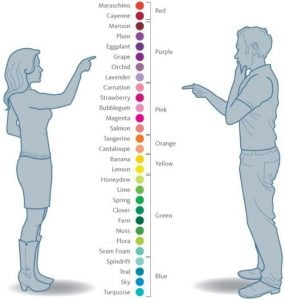5 Interesting Facts on Colour that will Help You in Your Day to Day Life
Colour affects our depth perception
When choosing the colours for a room you should consider this. Bright, cool colours generally make a room feel bigger, and dark warm colours generally make a room feel smaller and more intimate.
Wearing bright colours could be the one thing between you and that job you wanted!
Wearing bright colours, you will stand out more than in greyed-off colours. Bright colours can improve your mood but also the moods of others around you which could affect the outcome of that important meeting. Or make an impact so a client remembers you when deciding who they choose to work with.
Pink is the colour used for anger management
When feeling angry it has been said that visualising the colour pink can reduce the anger you are feeling. The colour pink promotes calmness and peace.
Red and yellow promote hunger
Red, makes you feel warm, comforted, and loved, which is what some would describe as the way a good meal should make us feel. Yellow, as well as being the ‘happy’ colour, has been found to encourage hunger when used with red. Your brain releases more serotonin, a feel-good hormone, when you see the colour. Notice how many restaurants use yellow in their logos to make you want to stop and eat.
Men and women see colour differently
Men and women really don’t see ‘eye to eye’. It’s said that while men’s eyes see colours, such as red, women’s eyes will see the different shades/tones of that colour, in this case, Maraschino and Cayenne.
ISCD has a 40-year proven track record of producing leading Australian interior designers. We know design intimately, from colour theory, to furniture selection to the latest industry trends.
Are you interested in studying interior design or decoration? Do you want to know more about our online courses and where a career in interior design could take you? Connect with us today to learn more about our Diploma of Interior Design, the Certificate IV in Interior Decoration or any of our industry-focused microcredentials.







